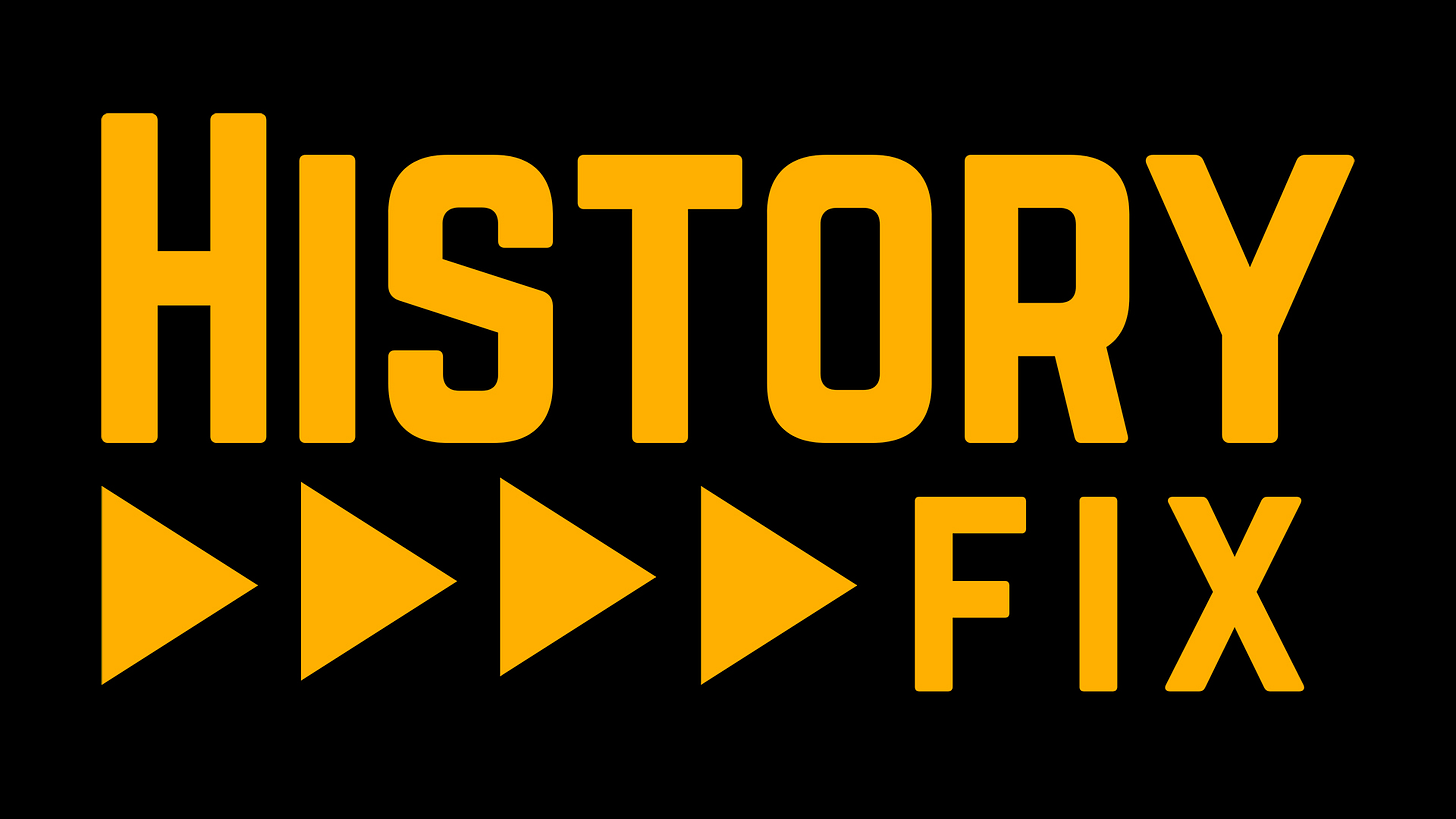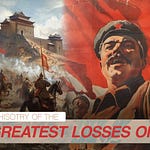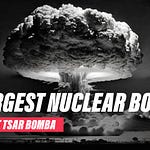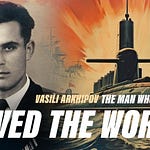On august 9th 1945, the United States dropped a nuclear weapon on Nagasaki. After almost 80 years, few are aware of the strange events that led to Nagasaki - of all places - being chosen as a nuclear target. The reality is, the city was not chosen because of any real military significance of value, but for other darker reasons which are, for the most part, not discussed to this day.
BACKGROUND
By 1945, the Trinity project was in its final stage. A successful nuclear detonation proved that the so called ‘gadget’ weapon could be used to level a city. This powerful new weapon - once publicly revealed - would change warfare forever. Yet as the Second World War was clearly drawing to a close, questions remained over what ought to be done with this new weapon. Part of that decision making process was initially in the hands of the scientists inventing the bomb during the Manhattan project.
Unlike most mainstream portrayals of J Robert Oppenheimer, this father of the nuclear bomb was not a peace-loving moralist. Conveniently glossed over in film portrayals of his character, Oppenheimer was in favour of the use of nuclear weapons, specifically against Germany. Records indicate that Oppenheimer was fully aware of the outcome of his project, and that his primary motive was to see nuclear weapons used against the German population. However, this apparent ethnic hatred did not seem to extend to the Japanese. Odd, considering that Imperial Japanese forces were by far the most brutal regime in the war, especially against the Chinese population.
Despite the desire to deploy nuclear weapons against Germany, the Manhattan Project scientists were unable finalise the project in time. The official surrender of Germany guaranteed the nations safety from the use of any such weapons. However, Japan was still fighting in the Pacific.
By early 1945, top US military brass were told that a Japanese surrender was unlikely, and that the Japanese were training their entire civilian population for an all-out war. Evidence today suggests this may have been untrue, and that advisors deliberately based their assumptions on comments by the most radical ultranationalists in the Japanese government. Regardless, the top commanders were given terrifying statistics by their advisors of what a ground invasion of mainland Japan would look like. It would be by far the costliest American battle of the war, with an estimated 1 million US casualties, and millions more dying in the imperial forces and civilian populations.
This led to a serious discussion over the use of nuclear weapons. Various proposals were made. The most logical was the suggestion that a nuclear weapon be detonated over a sparsely or unpopulated area of Japan, following a public announcement to the Japanese government, as a show of force. This idea was struck down as being prone to embarrassment, should the bomb not detonate after a public announcement of the event. It needed to be a surprise attack, and upon a strategic target. The next discussion that should have been about what that specific targets would be strategic and how to minimise civilian casualties. However, civilian casualties seemed to have become the strategy.
The newly appointed President Harry Truman was informed about the nuclear program shortly after taking office. The “gadgets” as they were called, were to be used on two targets designated by military planners. Despite opposition from General Dwight Eisenhower, the decision was made to use the two weapons directly over civilian metropolitan areas with the intent of maximising damage, flattening everything within the 3-mile blast radius. Eisenhower would later lament, “Japan was already defeated. Dropping the bombs was completely unnecessary.”
Nevertheless, a target committee was set up to rank order potential target locations. One target not on the initial list was the culturally important city of Nagasaki.
NAGASAKI
The city of Nagasaki had a long history as a Christian stronghold, particularly for Catholicism. In 1580 Jesuit missionaries from Portugal had moved to the city through the port, which was essentially the only port in Japan open to international trade. A lord donated his land to the missionaries. This land, located in the hills, is now known as the Urakami district. Over the following years Christianity spread so quickly that local rulers began to outlaw it. In 1597, 26 Christians were martyred in the hill region. The next 250 years would see Christianity suppressed, however the underground church continued to grow in the city.
By the 20th century, Nagasaki had become an unofficial centre of Christianity in Asia. The Urakami district of Nagasaki was home to the largest Catholic cathedral in Asia. By the 1930s it was internationally renowned for its Catholic importance. In 1930 famous Christian Maximilian Kolbe had travelled there and opened a monastery. The strong link between this region and Christianity could not be ignored.
THE NUCLEAR TARGETS
It is odd then that Nagasaki, of all places, became a nuclear target. The story of how this occurred is even stranger.
With the target committee drawing up plans for the deployment of the two bombs, precautions were taken. To begin with, a rank ordered list of targets were presented, with priority falling in sequential order. If weather conditions or other issues were encountered over a certain target, the next target on the list would be prioritised.
Nagasaki was not on the original list. Even if it did have military significance, the mountainous terrain didn’t make it a good target for the bomb and it was difficult to ascertain bomb effectiveness in such an area. While it did have an economic centre, the only real target was the Mitsubishi shipyard. However, in comparison to other major cities, Nagasaki had far less military value. It was also the location of a number of Allied prisoners of war.
During May and June, when the first target lists were being drawn up, Nagasaki would be firebombed on multiple occasions. For locations considered possible nuclear targets, this sort of conventional bombing was withheld, so that the full impact of a single nuclear bomb could be observed.
Given the gravity of the situation, Secretary of War Henry Stimson - the same man who had rallied against the genocidal Morgenthau Plan for Germany - organised meetings with Truman. In early June he met to dissuade Truman from using the bomb against civilian populations. When that failed, he argued against its use in Kyoto - given its sacred importance to the Japanese. He argued that the US would be no different to the Axis if they did this. Truman agreed to overlook Kyoto. On July 24th, a second meeting was held. Here Stimson and Truman discussed targets.
Later that same day, the final list of targets was dispatched. This typed ‘top secret’ document ordered the Air Force to “deliver its first special bomb” to “Hiroshima, Kokura, and Niigata in that order”. However, there was a change. In pen, someone had struck out the “and” and inserted an arrow pointing to the name “Nagasaki”, which was hand-written into the document. This document became the official target list, and was circulated the next day, with the hand-written instructions kept in.
Strangely, no one has been able to identify the hand that wrote ‘Nagasaki’ on the list. Given his previous record, it is highly unlikely that Stimson had a role in this.
THE MISSION
The mission was now ready to begin. B-29s were prepared to strike targets in Japan. Bombardiers at the time required visual identification of the target. To achieve this, mission planners would draw up a target map for each mission. The two nuclear bombing missions over Japan were no different.
The recollections of the second bombing mission is odd to say the least. With Hiroshima already bombed, a B-29 was sent to strike the second target - the city of Kokura. Despite the importance of the mission, multiple times the crew were forced to stand down. During one flight they had hydraulic issues. During another, they failed multiple times to identify the target. During yet another the camera plane never showed up to record the event.
Priority was then shifted to Nagasaki. During their first attempt, the same crew could not identify Nagasaki through thick cloud cover. However, they eventually did find their target. Interestingly, the target map for the Nagasaki mission - which would have highlighted exactly where the bombardier was to aim - is listed as missing from the national archives. However, in a recollection, bombardier Kermit Beahan said that as they approached “there was the target, pretty as day.”
The atomic bomb that was dropped detonated, not over the Mitsubishi shipyards nor over the central business district of the city, but far north, over the Urakami district. In fact, the specific location of the explosion was almost directly over the Catholic cathedral. This fact was highlighted by Christian and non-Christian locals. The non-Christians - obviously noticing the inexplicable targeting - blamed the worship of a foreign god as being responsible for the destruction of the city, whilst Christians, obviously, believed there was another explanation.
After the war, the decision to bomb the Urkami district needed an explanation, yet the only US sanctioned one was a book by Catholic Takashi Nagai, who said that the bombing was an ‘act of divine providence’, with the sacrifice of the innocent atoning for the world at war. Clearly, this was not a satisfactory explanation.
Some Catholics today argue that the destruction was a direct retaliation because of the Catholic Church’s willingness to establish diplomatic ties with Japan following Pearl Harbour. Others see it as a decision by more insidious and darker forces.
It may never be known why Nagasaki was targeted, and why the Catholic centre of Asia was obliterated in an act of war. It remains, however, one of the great and terrible misdeeds of the 20th Century.
Like History Documentaries? Support our sponsor, History Fix. To get 30% discount on the first year of an annual subscription, use the code 30PERCENTOFF
















Share this post